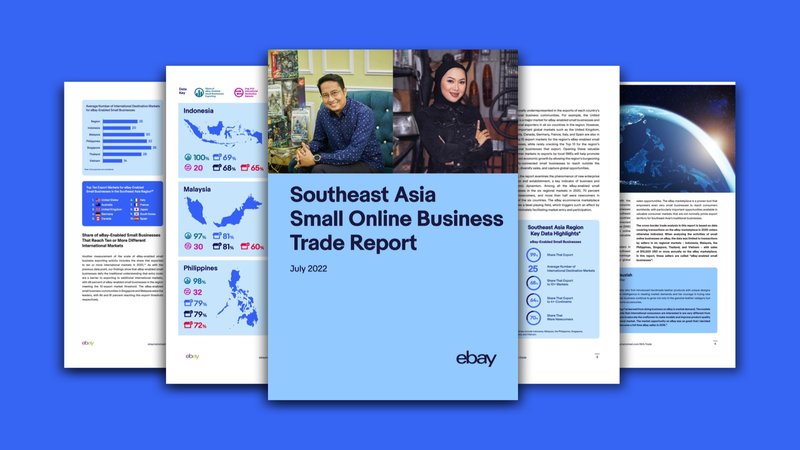Southeast Asia is gaining a global reputation as a hotspot of innovative web-savvy talent; in most of the region’s countries, over 70 percent of the population has Internet access, and in the countries of Indonesia, Malaysia, the Philippines, Singapore, Thailand and Vietnam, around half the population is under the age of 30. But the particularities of the region — mobile devices are dominant, and access has expanded in a small amount of time — has led to an ecommerce sector with platforms of various sizes operating side-by-side. There, small- and medium-sized ecommerce businesses can thrive, and as eBay’s new report shows, they’re thriving in impressive and unexpected ways.
eBay’s newly released report, the Southeast Asia Small Online Business Trade Report, looks at the performance of eBay-enabled small businesses (sales of at least $10,000 annually) in six countries in 2020. The sellers in those six countries sell all kinds of different products, but one thing they have in common is a global reach.
Only about 11 percent of traditional businesses export their wares in the six Southeast Asian countries studied in our report, combined. For those on eBay, though, that’s 99 percent, and sellers export to an average of 25 different countries. “I started selling locally and worked my way to selling internationally,” says Maria Magnetta “Manette” Calupitan, who sells under the name Beautymagnet, from the Philippines. “Instead of just doing eBay on the side, like I originally planned, it became my major source of income.”
eBay enables these smaller sellers to reach markets that ordinarily would be difficult to enter. Many of the top export destinations for Southeast Asian sellers are located halfway around the world; the United States ranks first, and other faraway countries like the United Kingdom, Germany, and Canada are in the top five. (Number two is Australia; not quite as far away, but a valuable exporting partner.) “eBay has been a big part of our journey so far, and we hope to continue and grow further with eBay,” says Amit Chilgunde, of Creationwatches, from Singapore. “The ability to access diverse markets and reach customers in different countries has added value to our business.”
Many of these export partners are uncommon for small businesses in the region. But through eBay, they are able to reach valuable consumer markets worldwide; a number of their top export partners do not even appear in the top 10 export partners for traditional businesses in their respective countries.
The ability to reach these shoppers is proving very attractive to small businesses in the region, 70 percent of which were newcomers to eBay, meaning they joined after 2016 and first broke the $10,000 mark in 2020. “Selling on eBay gives my side-hustle an edge in profitability by tapping customers worldwide,” says Vito Ortigo of the Philippines, who sells sports cards and memorabilia.
Small businesses are vital to eBay’s purpose — to connect people and build communities to create economic opportunity for all — and in Southeast Asia, it’s clear that sellers are embracing the global marketplace that eBay provides. Read more in our report at eBay Main Street.


